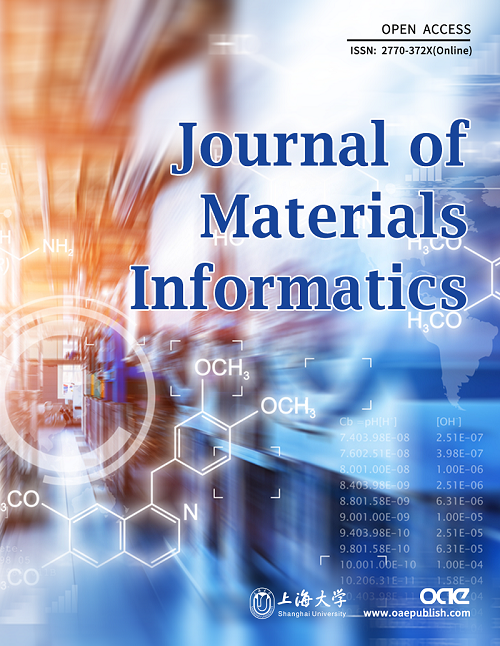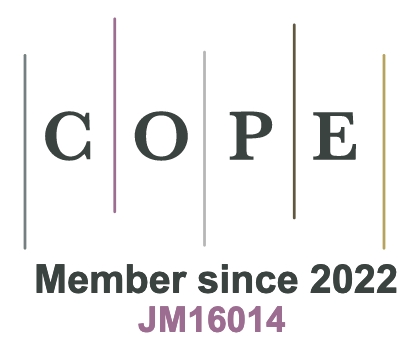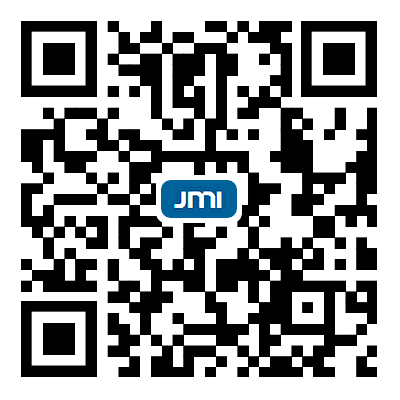REFERENCES
1. Beck, A.; Paunović, V.; van, B. J. A. Identifying and avoiding dead ends in the characterization of heterogeneous catalysts at the gas-solid interface. Nat. Catal. 2023, 6, 873-84.
2. Li, X.; Mitchell, S.; Fang, Y.; Li, J.; Perez-Ramirez, J.; Lu, J. Advances in heterogeneous single-cluster catalysis. Nat. Rev. Chem. 2023, 7, 754-67.
3. Bruix, A.; Margraf, J. T.; Andersen, M.; Reuter, K. First-principles-based multiscale modelling of heterogeneous catalysis. Nat. Catal. 2019, 2, 659-70.
4. Handoko, A. D.; Wei, F.; Jenndy; Yeo, B. S.; Seh, Z. W. Understanding heterogeneous electrocatalytic carbon dioxide reduction through operando techniques. Nat. Catal. 2018, 1, 922-34.
5. Tran, K.; Ulissi, Z. W. Active learning across intermetallics to guide discovery of electrocatalysts for CO2 reduction and H2 evolution. Nat. Catal. 2018, 1, 696-703.
6. Greeley, J.; Stephens, I. E.; Bondarenko, A. S.; et al. Alloys of platinum and early transition metals as oxygen reduction electrocatalysts. Nat. Chem. 2009, 1, 552-6.
7. Wu, Z.; Li, Z.; Li, Y.; Zhang, Y.; Li, J. Improving the DFT computational accuracy for CO activation on Fe surfaces by Bayesian error estimation functional with van der Waals correlation. Comput. Theor. Chem. 2023, 1219, 113968.
8. Araujo, R. B.; Rodrigues, G. L. S.; Dos, S. E. C.; Pettersson, L. G. M. Adsorption energies on transition metal surfaces: towards an accurate and balanced description. Nat. Commun. 2022, 13, 6853.
9. Nørskov, J. K.; Bligaard, T.; Logadottir, A.; et al. Trends in the exchange current for hydrogen evolution. J. Electrochem. Soc. 2005, 152, J23.
10. Nørskov, J. K.; Rossmeisl, J.; Logadottir, A.; et al. Origin of the overpotential for oxygen reduction at a fuel-cell cathode. J. Phys. Chem. B. 2004, 108, 17886-92.
11. Greeley, J.; Jaramillo, T. F.; Bonde, J.; Chorkendorff, I. B.; Nørskov, J. K. Computational high-throughput screening of electrocatalytic materials for hydrogen evolution. Nat. Mater. 2006, 5, 909-13.
12. Liu, X.; Xiao, J.; Peng, H.; Hong, X.; Chan, K.; Nørskov, J. K. Understanding trends in electrochemical carbon dioxide reduction rates. Nat. Commun. 2017, 8, 15438.
13. Zhan, C.; Dattila, F.; Rettenmaier, C.; et al. Revealing the CO coverage-driven C–C coupling mechanism for electrochemical CO2 reduction on Cu2O nanocubes via operando raman spectroscopy. ACS. Catal. 2021, 11, 7694-701.
14. Cave, E. R.; Shi, C.; Kuhl, K. P.; et al. Trends in the catalytic activity of hydrogen evolution during CO2 electroreduction on transition metals. ACS. Catal. 2018, 8, 3035-40.
15. Ding, H.; Zheng, S.; Yang, X.; et al. Role of surface hydrogen coverage in C–C coupling process for CO2 electroreduction on Ni-based catalysts. ACS. Catal. 2024, 14, 14330-8.
16. Zheng, S.; Liang, X.; Pan, J.; Hu, K.; Li, S.; Pan, F. Multi-center cooperativity enables facile C–C coupling in electrochemical CO2 reduction on a Ni2P catalyst. ACS. Catal. 2023, 13, 2847-56.
17. Zheng, S.; Ding, H.; Yang, X.; Li, S.; Pan, F. Automating discovery of electrochemical urea synthesis reaction paths via active learning and graph theory. https://www.chinesechemsoc.org/doi/full/10.31635/ccschem.024.202404955 (accessed 2024-02-07).
18. Ghanekar, P. G.; Deshpande, S.; Greeley, J. Adsorbate chemical environment-based machine learning framework for heterogeneous catalysis. Nat. Commun. 2022, 13, 5788.
19. Xiong, Y.; Wang, Y.; Zhou, J.; Liu, F.; Hao, F.; Fan, Z. Electrochemical nitrate reduction: ammonia synthesis and the beyond. Adv. Mater. 2024, 36, e2304021.
20. Zheng, S.; Yang, X.; Shi, Z. Z.; Ding, H.; Pan, F.; Li, J. F. The loss of interfacial water-adsorbate hydrogen bond connectivity position surface-active hydrogen as a crucial intermediate to enhance nitrate reduction reaction. J. Am. Chem. Soc. 2024, 146, 26965-74.
22. Chen, Y.; Wei, J.; Duyar, M. S.; Ordomsky, V. V.; Khodakov, A. Y.; Liu, J. Carbon-based catalysts for Fischer-Tropsch synthesis. Chem. Soc. Rev. 2021, 50, 2337-66.
23. Weststrate, C. J. K.; Sharma, D.; Garcia, R. D.; Gleeson, M. A.; Fredriksson, H. O. A.; Niemantsverdriet, J. W. H. Mechanistic insight into carbon–carbon bond formation on cobalt under simulated Fischer-Tropsch synthesis conditions. Nat. Commun. 2020, 11, 750.
24. Ai, C.; Chang, J. H.; Tygesen, A. S.; Vegge, T.; Hansen, H. A. Impact of hydrogen concentration for CO2 reduction on PdHx : a combination study of cluster expansion and kinetics analysis. J. Catal. 2023, 428, 115188.
25. Deshpande, S.; Maxson, T.; Greeley, J. Graph theory approach to determine configurations of multidentate and high coverage adsorbates for heterogeneous catalysis. npj. Comput. Mater. 2020, 6, 345.
26. Bang, K.; Hong, D.; Park, Y.; Kim, D.; Han, S. S.; Lee, H. M. Machine learning-enabled exploration of the electrochemical stability of real-scale metallic nanoparticles. Nat. Commun. 2023, 14, 3004.
27. Liu, P.; Wang, J.; Avargues, N.; et al. Combining machine learning and many-body calculations: coverage-dependent adsorption of CO on Rh(111). Phys. Rev. Lett. 2023, 130, 078001.
28. Jenner, B.; Köbler, J.; Mckenzie, P.; Torán, J. Completeness results for graph isomorphism. J. Comput. Syst. Sci. 2003, 66, 549-66.
29. Sumaria, V.; Sautet, P. CO organization at ambient pressure on stepped Pt surfaces: first principles modeling accelerated by neural networks. Chem. Sci. 2021, 12, 15543-55.
30. Yang, Y.; Jiménez-Negrón, O. A.; Kitchin, J. R. Machine-learning accelerated geometry optimization in molecular simulation. J. Chem. Phys. 2021, 154, 234704.
31. Jha, D.; Gupta, V.; Ward, L.; et al. Enabling deeper learning on big data for materials informatics applications. Sci. Rep. 2021, 11, 4244.
32. Zhang, L.; Han, J.; Wang, H.; Car, R.; E, W. Deep potential molecular dynamics: a scalable model with the accuracy of quantum mechanics. Phys. Rev. Lett. 2018, 120, 143001.
33. Ulissi, Z. W.; Tang, M. T.; Xiao, J.; et al. Machine-learning methods enable exhaustive searches for active bimetallic facets and reveal active site motifs for CO2 reduction. ACS. Catal. 2017, 7, 6600-8.
34. Sumaria, V.; Nguyen, L.; Tao, F. F.; Sautet, P. Atomic-scale mechanism of platinum catalyst restructuring under a pressure of reactant gas. J. Am. Chem. Soc. 2023, 145, 392-401.
35. Xu, W.; Reuter, K.; Andersen, M. Predicting binding motifs of complex adsorbates using machine learning with a physics-inspired graph representation. Nat. Comput. Sci. 2022, 2, 443-50.
36. Boes, J. R.; Mamun, O.; Winther, K.; Bligaard, T. Graph theory approach to high-throughput surface adsorption structure generation. J. Phys. Chem. A. 2019, 123, 2281-5.
37. Eren, B.; Zherebetskyy, D.; Patera, L. L.; et al. Activation of Cu(111) surface by decomposition into nanoclusters driven by CO adsorption. Science 2016, 351, 475-8.
38. Pérez-Gallent, E.; Figueiredo, M. C.; Calle-Vallejo, F.; Koper, M. T. Spectroscopic observation of a hydrogenated CO dimer intermediate during CO reduction on Cu(100) electrodes. Angew. Chem. Int. Ed. Engl. 2017, 56, 3621-4.
39. Nakano, H.; Nakamura, I.; Fujitani, T.; Nakamura, J. Structure-dependent kinetics for synthesis and decomposition of formate species over Cu(111) and Cu(110) model catalysts. J. Phys. Chem. B. 2001, 105, 1355-65.
40. Hori, Y.; Takahashi, I.; Koga, O.; Hoshi, N. Electrochemical reduction of carbon dioxide at various series of copper single crystal electrodes. J. Mol. Catal. A. Chem. 2003, 199, 39-47.
41. Wang, S.; Jian, M.; Su, H.; Li, W. First-Principles microkinetic study of methanol synthesis on Cu(221) and ZnCu(221) surfaces. Chin. J. Chem. Phys. 2018, 31, 284-90.
42. Schouten, K. J. P.; Pérez, G. E.; Koper, M. T. M. Structure sensitivity of the electrochemical reduction of carbon monoxide on copper single crystals. ACS. Catal. 2013, 3, 1292-5.
43. Guo, W.; Vlachos, D. G. Effect of local metal microstructure on adsorption on bimetallic surfaces: atomic nitrogen on Ni/Pt(111). J. Chem. Phys. 2013, 138, 174702.
44. Deshpande, S.; Greeley, J. First-Principles analysis of coverage, ensemble, and solvation effects on selectivity trends in NO electroreduction on Pt3Sn alloys. ACS. Catal. 2020, 10, 9320-7.
45. Ojeda, M.; Nabar, R.; Nilekar, A. U.; Ishikawa, A.; Mavrikakis, M.; Iglesia, E. CO activation pathways and the mechanism of Fischer-Tropsch synthesis. J. Catal. 2010, 272, 287-97.
46. Stróż, K. Plane groups - from basic to advanced crystallographic concepts. Z. Kristallogr. Cryst. Mater. 2003, 218, 642-9.
47. Hoffmann, F. Symmetry in the plane: about wallpaper patterns, islamic mosaics, drawings from escher, and heterogeneous catalysts. In Introduction to Crystallography; Hoffmann, F., Eds.; Springer International Publishing: Cham, 2020; pp 127-50.
48. Hahn, T. The 17 plane groups (two-dimensional space groups). In International Tables for Crystallography Volume A: Space-group symmetry; Hahn, T., Ed. Springer Netherlands: Dordrecht, 2002; pp 92-109.
49. Chanussot, L.; Das, A.; Goyal, S.; et al. Open catalyst 2020 (OC20) dataset and community challenges. ACS. Catal. 2021, 11, 6059-72.
50. Lu, D.; Wang, H.; Chen, M.; et al. 86 PFLOPS deep potential molecular dynamics simulation of 100 million atoms with ab initio accuracy. Comput. Phys. Commun. 2021, 259, 107624.
51. Weng, M.; Wang, Z.; Qian, G.; et al. Identify crystal structures by a new paradigm based on graph theory for building materials big data. Sci. China. Chem. 2019, 62, 982-6.
52. Li, S.; Chen, Z.; Wang, Z.; et al. Graph-based discovery and analysis of atomic-scale one-dimensional materials. Natl. Sci. Rev. 2022, 9, nwac028.
53. Li, S.; Liu, Y.; Chen, D.; Jiang, Y.; Nie, Z.; Pan, F. Encoding the atomic structure for machine learning in materials science. WIREs. Comput. Mol. Sci. 2022, 12, e1558.
54. Xie, T.; Grossman, J. C. Crystal graph convolutional neural networks for an accurate and interpretable prediction of material properties. Phys. Rev. Lett. 2018, 120, 145301.
55. Steiner, M.; Reiher, M. Autonomous reaction network exploration in homogeneous and heterogeneous catalysis. Top. Catal. 2022, 65, 6-39.
56. Gu, G. H.; Lee, M.; Jung, Y.; Vlachos, D. G. Automated exploitation of the big configuration space of large adsorbates on transition metals reveals chemistry feasibility. Nat. Commun. 2022, 13, 2087.
57. Qiao, Z.; Nie, W.; Vahdat, A.; Miller, T. F.; Anandkumar, A. State-specific protein-ligand complex structure prediction with a multiscale deep generative model. Nat. Mach. Intell. 2024, 6, 195-208.
58. Grabow, L. C.; Hvolbæk, B.; Nørskov, J. K. Understanding trends in catalytic activity: the effect of adsorbate-adsorbate interactions for CO oxidation over transition metals. Top. Catal. 2010, 53, 298-310.
59. Lausche, A. C.; Medford, A. J.; Khan, T. S.; et al. On the effect of coverage-dependent adsorbate-adsorbate interactions for CO methanation on transition metal surfaces. J. Catal. 2013, 307, 275-82.
60. Huang, Y.; Handoko, A. D.; Hirunsit, P.; Yeo, B. S. Electrochemical reduction of CO2 using copper single-crystal surfaces: effects of CO* coverage on the selective formation of ethylene. ACS. Catal. 2017, 7, 1749-56.
61. Hou, J.; Chang, X.; Li, J.; Xu, B.; Lu, Q. Correlating CO coverage and CO electroreduction on Cu via high-pressure in situ spectroscopic and reactivity investigations. J. Am. Chem. Soc. 2022, 144, 22202-11.
62. Jin, J.; Wicks, J.; Min, Q.; et al. Constrained C2 adsorbate orientation enables CO-to-acetate electroreduction. Nature 2023, 617, 724-9.
63. Zheng, Y.; Zhang, J.; Ma, Z.; et al. Seeded growth of gold-copper janus nanostructures as a tandem catalyst for efficient electroreduction of CO2 to C2+ products. Small 2022, 18, e2201695.
64. Sun, W.; Wang, P.; Jiang, Y.; et al. V-doped Cu2 Se hierarchical nanotubes enabling flow-cell CO2 electroreduction to ethanol with high efficiency and selectivity. Adv. Mater. 2022, 34, e2207691.
65. Yan, X.; Chen, C.; Wu, Y.; et al. Boosting CO2 electroreduction to C2+ products on fluorine-doped copper. Green. Chem. 2022, 24, 1989-94.
66. Reller, C.; Krause, R.; Volkova, E.; et al. Selective electroreduction of CO2 toward ethylene on nano dendritic copper catalysts at high current density. Adv. Energy. Mater. 2017, 7, 1602114.








